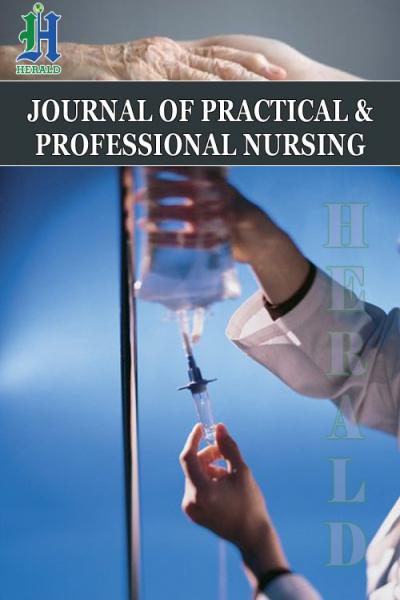
When the Fire Comes: Why Leadership Must Pivot Well-Being Strategies during Disasters
*Corresponding Author(s):
Adrienne Martinez-HollingsworthPublic Health Nurse, Health Equity Researcher, And The Director Of Research At The AltaMed Institute For Health Equity, United States
Email:amhollingsworth@altamed.org
Southern California is no stranger to natural disasters. But the wildfires of 2025 were a tipping point, scorching thousands of acres, displacing families, and straining the very systems meant to safeguard our communities. In moments like these, we turn to our health systems for stability. Yet too often, those systems depend on a workforce already stretched to the brink, especially in community health settings.
As the Director of Research and Evaluation at AltaMed, the largest Federally Qualified Health Center system in the country, I saw firsthand how frontline staff like Physicians, Medical Assistants, Licensed Vocational Nurses, and Community Health Workers became first responders during the Eaton Wildfire. They showed up despite personal loss. They supported patients while worrying about their own families. They organized shelter activities, administered medications, and absorbed the collective trauma of a community in crisis.
AltaMed rose to the challenge during the Eaton Wildfire, not only by caring for evacuees but by recognizing and responding to the needs of the very workforce deployed to provide that care. In doing so, the organization modeled a future vision for community health, one where disaster response includes holistic support for both patients and providers, especially those on the front lines.
We’ve made progress in talking about burnout and resilience, but let’s be honest
Most well-being strategies aren’t designed for disasters. Too many leadership toolkits still rely on long-term programming, pre-scheduled wellness sessions, or mindfulness campaigns that assume basic needs are met. These tools aren’t just ineffective in a crisis, they’re tone deaf.
Disasters demand a pivot. If you are a leader reading this, it’s time to reconsider what it means to support your team’s well-being. And that starts with acknowledging three truths.
First, hierarchy doesn’t hold in crisis
During the Eaton Wildfire, decisions were made quickly, communication lines shifted, and those closest to the ground, often entry-level staff, became the eyes and ears of our response. These workers are often residents of the same communities hit hardest by disaster. Their proximity gives them insight we can’t afford to ignore.
Yet too often, we default to top-down planning. We roll out generic “support” strategies that feel detached and insufficient. Leadership must be willing to flatten the structure temporarily, to listen, learn, and adapt based on the lived experiences of those navigating the crisis in real time.
Second, basic needs must come before emotional wellness
We talk a lot about “resilience,” but true resilience can’t take root when a worker doesn’t know if their house is standing or their child is safe. Many of our clinical staff don’t have the privilege of remote work or paid emergency leave. Theoretical discussions of self-care ring hollow when survival is the priority.
In my research and disaster response leadership, we’ve found that applying frameworks like Maslow’s Hierarchy of Needs helps shift the conversation. Before offering meditation sessions, make sure your people have food, shelter, and transportation. Offer meal delivery on-site. Bring in mobile units. Give time off without penalty. Partner with mutual aid networks. Then, and only then, can you begin to talk about healing.
Third, don’t wait for perfection- respond in real time
The most effective leadership interventions during Eaton weren’t polished or permanent. They were fast, humble, and human. We are partnering with experienced groups like Cypress Resilience, the National Alliance on Mental Illness, Project Hope and the Trauma Resource Institute to offer anonymous, virtual recovery circles for staff, short 40-minute sessions led by experts in trauma-informed care. These sessions shouldn’t require registration or disclosure. They should meet people where they are, in the moment they are ready.
We also developed a rapid needs assessment survey to surface staff fears, sense of purpose, and barriers to recovery. The findings helped us allocate resources quickly and shape culturally responsive supports, like bilingual counseling or spiritual care.
What leaders must internalize is this
In times of disaster, your job is not just to protect operations, it’s to protect people. That may mean stepping out of the boardroom and into the field. It may mean trading policy development for meal distribution. It will definitely mean listening more than talking.
Ultimately, the legacy of a disaster is shaped not just by what happened, but how we cared for one another in the aftermath. In Southern California and beyond, we are entering an era where climate crisis, displacement, and systemic inequality are no longer isolated events but persistent threats. Our leadership models must evolve accordingly.
That doesn’t mean throwing out everything we’ve built. It means being willing to pivot. Being willing to say, “This moment requires something different of me.”
And then doing it.
Citation: Martinez-Hollingsworth A (2025) When the Fire Comes: Why Leadership Must Pivot Well-Being Strategies during Disasters. J Pract Prof Nurs 9: 063
Copyright: © 2025 Adrienne Martinez-Hollingsworth, et al. This is an open-access article distributed under the terms of the Creative Commons Attribution License, which permits unrestricted use, distribution, and reproduction in any medium, provided the original author and source are credited.

